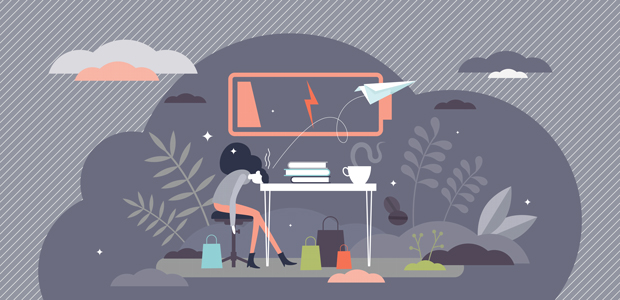
How should businesses priortise employees' mental health
In what has been both a mentally and organisationally testing period for many, businesses need to ensure they’re taking every action to support their employees’ mental health and encourage employees to make decisions that prioritise their mental and physical wellbeing.
To recognise World Mental Health day, below are a number of comments from leaders in tech on what business leaders should consider in order to prioritise their employees mental health.
Peggy de Lange - Vice President International Expansion: Fiverr
"If the past 18 months has shown both employers and employees anything, it’s that mental health needs to be a key consideration when picking a career path. Regardless of whether you see your role as an employer, employee or a self-employed nomad, you must ensure that you’re managing your work/life balance.
"New research from Fiverr suggests that a whopping 77% of freelancers in the UK rate their work/life balance as ‘good’ and a further 3 in 4 (75%) of freelancers describe their fitness and wellbeing as ‘good’. In both cases, these stats are higher than their office counterparts, suggesting real benefits to the freelance lifestyle.
"This mental and physical advantage is likely due to the flexibility that freelance careers offer, allowing you to only take on work that you’re passionate about doing and doing so, in the manner you want, and in your own time. Whilst it is not as black and white as turning freelance in order to prioritise your mental health, there are notable benefits for those looking to make changes to do so on a self-employed path."
Benji Vaughan - CEO and Founder: Disciple
"Prioritising our mental wellbeing has come to the forefront as the world battled a global pandemic. It’s no secret that the digital era has impacted our mental health and the past 18 months have seen the world flock to their screens in an attempt to stay connected.
"As we saw with the shut down of Facebook, Instagram and Whatsapp last week, those running businesses through social media platforms are susceptible to increased bouts of time spent on these platforms for both work and personal purposes. But, social media has proven to be a double edged sword as various studies have shown the impact social media platforms can have on our mental health. The growing presence of community-led platforms means that those who use social media to connect with their clients can do so on a platform centred around a shared passion, which is less crowded and encourages more meaningful engagement.
"Being part of a community has never been more important, whether that’s in a work or personal capacity. World Mental Health Day is an opportunity for us to reflect on what platforms we’re a part of and how we engage with them."
Larry Gadea - Founder and CEO: Envoy
"The future of work won’t be five days in the office. Nor will it be entirely remote. The answer lies somewhere in between with hybrid work. The beauty of going hybrid is that it offers the best of both models. A combination of splitting time between the office and remote work gives people the flexibility for heads-down work one day and more collaborative, in-person interactions the next.
"One reason people stay and thrive at a company is because they enjoy being around others at work. Folks are returning to the workplace because it’s easier to collaborate in-person and they want to see their work friends. They miss interacting with each other. They miss socializing. This is why the workplace is critical to long-term mental health. Vibrant workplaces support community- and culture-building - and it can’t be replicated any other way. On-site experiences need to remain part of the work experience. And leaders will have to be super thoughtful and proactive about bringing people back to a better experience, and not the same old office.
"There are two important questions you should ask yourself and your people: ‘What kind of workplace do you want to return to?’ and ‘What can we do better?’. The challenge is creating a great, safe experience for people so they choose to come in. Give them what they’ll need to successfully navigate hybrid work. Technology that can identify who is coming into work - and when - so they can coordinate with teammates and reserve desks together. Virtual mapping, hot desking, touchless access, and the ability to choose where you sit based on what type of work you’re doing. There's never been a better time to experiment with the technology that will make the transition from remote to hybrid a little easier."

